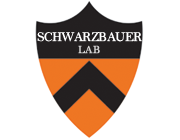A shared mechanism of adhesion modulation for tenascin-C and fibulin-1.
Type
Adhesion modulatory proteins are important effectors of cell-matrix interactions during tissue remodeling and regeneration. They comprise a diverse group of matricellular proteins that confer antiadhesive properties to the extracellular matrix (ECM). We compared the inhibitory effects of two adhesion modulatory proteins, fibulin-1 and tenascin-C, both of which bind to the C-terminal heparin-binding (HepII) domain of fibronectin (FN) but are structurally distinct. Here, we report that, like tenascin-C, fibulin-1 inhibits fibroblast spreading and cell-mediated contraction of a fibrin-FN matrix. These proteins act by modulation of focal adhesion kinase and extracellular signal-regulated kinase signaling. The inhibitory effects were bypassed by lysophosphatidic acid, an activator of RhoA GTPase. Fibroblast response to fibulin-1, similar to tenascin-C, was dependent on expression of the heparan sulfate proteoglycan syndecan-4, which also binds to the HepII domain. Therefore, blockade of HepII-mediated signaling by competitive binding of fibulin-1 or tenascin-C represents a shared mechanism of adhesion modulation among disparate modulatory proteins.

